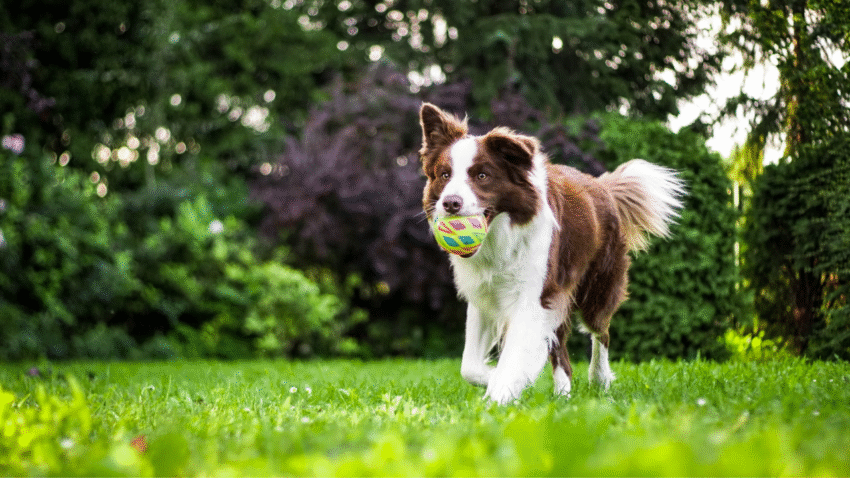Introduction
Frustrated with your dog chewing the couch, table legs, or your favorite chair? You’re not alone. Chewing is a natural behavior for dogs—but when it’s directed at your furniture, it can quickly become destructive and expensive. In this guide, you’ll learn how to stop your dog from chewing furniture using positive training, redirection, and proven prevention techniques. Whether you have a teething puppy or an anxious adult dog, these steps will help you protect your home and your sanity.
Why Dogs Chew Furniture
Understanding why your dog chews is key to solving the problem. Common reasons include:
- Teething (in puppies)
- Boredom or excess energy
- Separation anxiety
- Lack of appropriate chew toys
- Exploration or habit
Once you know the cause, you can apply the right solution.
Step-by-Step Guide to Stop Furniture Chewing
Step 1: Provide Plenty of Appropriate Chew Options
Dogs need to chew—so give them something better to chew on:
- Durable chew toys (like KONGs, Nylabones, or rope toys)
- Frozen carrots or soaked washcloths for teething puppies
- Interactive puzzle toys to keep them mentally engaged
Rotate toys every few days to keep them interesting.
Step 2: Use Deterrent Sprays on Furniture
Make furniture taste bad to discourage chewing:
- Apply a dog-safe bitter spray (available at pet stores) to commonly chewed spots
- Reapply as needed—most are harmless but unpleasant to taste
- Always test a small, hidden area first to check for discoloration
Natural option: a 1:1 mix of white vinegar and water can work as a mild deterrent.
Step 3: Supervise and Redirect
Catch your dog in the act?
- Say “No” firmly but calmly
- Immediately offer a chew toy
- Praise when they chew the correct item
Be consistent—dogs learn quickly with clear feedback and rewards.
Step 4: Create a Safe, Boredom-Free Space
Prevent unsupervised chewing:
- Use a crate or gated area when you can’t supervise
- Provide chew toys and a comfy bed in their space
- Keep shoes, cords, and other tempting items out of reach
A well-managed environment reduces chances of bad habits forming.
Step 5: Increase Physical and Mental Exercise
A tired dog is a well-behaved dog:
- Go on longer or more frequent walks
- Play tug, fetch, or scent games indoors
- Try dog sports like agility or obedience training
Daily activity helps release pent-up energy that might otherwise be directed at your furniture.
Step 6: Address Separation Anxiety
If chewing only happens when you’re gone:
- Practice short departures and returns to build independence
- Leave calming music or a food-stuffed toy while you’re out
- Talk to your vet about anxiety treatments if it persists
For severe cases, consider working with a dog behaviorist.
Common Mistakes to Avoid
1. Punishing After the Fact
- Dogs don’t associate punishment with past behavior
- If you punish them later, they won’t understand why
2. Leaving Furniture Unguarded
- If your dog has free roam and access to tempting items, they’ll repeat the behavior
- Prevention is key—limit access when you’re not watching
3. Offering Inappropriate Chew Items
- Old shoes or socks may seem harmless but can confuse your dog
- They won’t know the difference between an old shoe and your new ones
4. Inconsistency
- Allowing chewing “sometimes” will confuse your dog
- Always redirect and reinforce good chewing behavior
5. Ignoring Underlying Issues
- Stress, lack of stimulation, or health problems can trigger chewing
- If the issue persists, consult your vet or a behavior expert
Extra Tips & Recommendations
Use Frozen Treat Toys
- Stuff a KONG with peanut butter and freeze it
- Keeps dogs busy for longer and satisfies chewing urges
Teach the “Leave It” Command
- Helps interrupt chewing before it starts
- Train with treats and use consistently
Reward Calm Behavior
- Praise your dog when they relax near furniture without chewing
- Positive reinforcement shapes long-term habits
Helpful Tools
- Chew deterrent spray
- Tough chew toys
- Puzzle feeders or treat dispensers
- Crate or playpen for unsupervised time
Conclusion
Stopping your dog from chewing furniture takes consistency, patience, and the right tools. By understanding why your dog chews and redirecting the behavior with appropriate outlets, you can protect your furniture and help your pup feel happy and fulfilled. With time and training, chewing can go from a destructive habit to a well-managed behavior.
